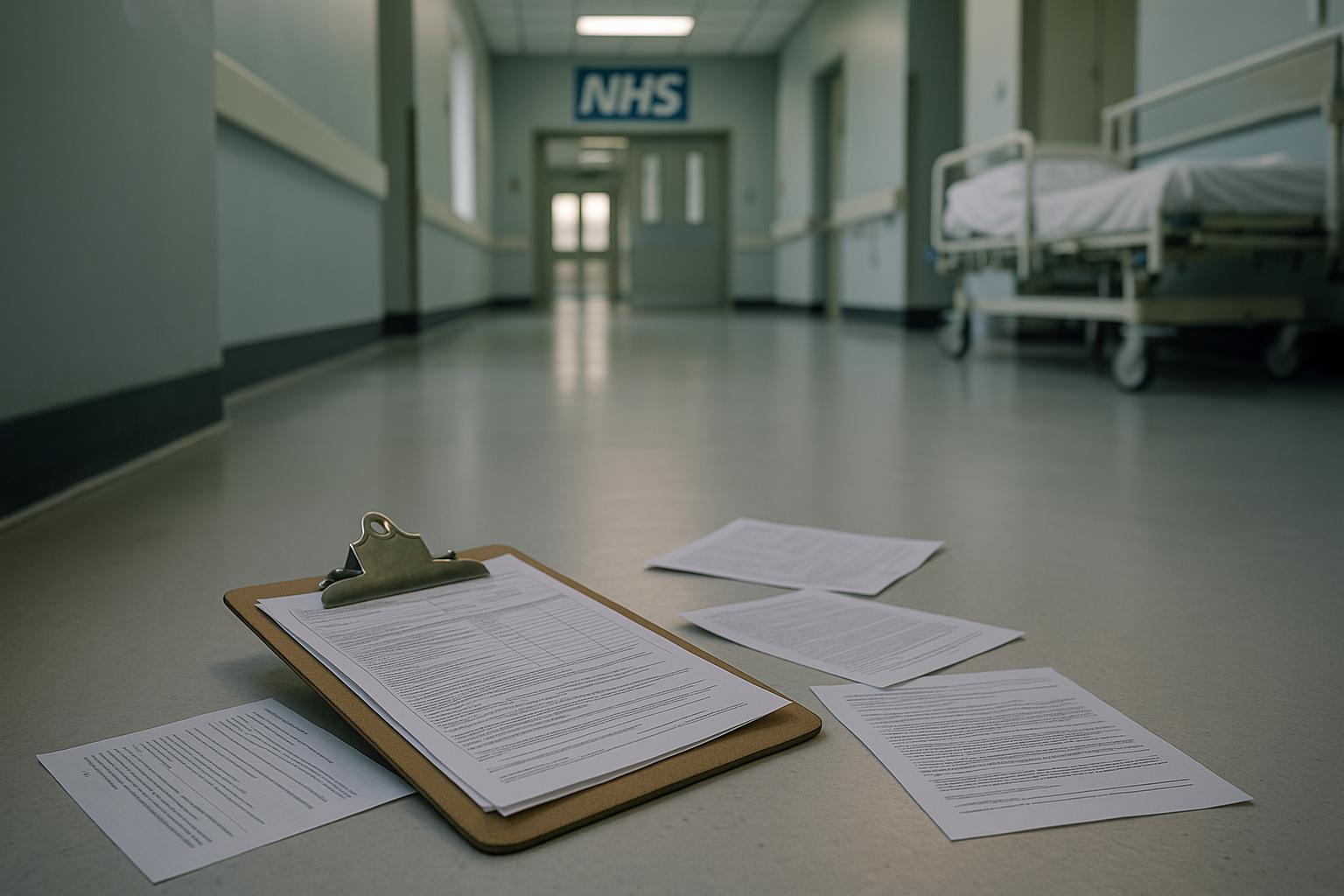Not long ago, a doctor working in a busy London hospital proposed creating a quiet room for patients with learning disabilities and autism in the urgent care department. The intention was simple: to provide a calm space where vulnerable patients could wait without becoming overwhelmed by the chaotic environment of A&E. A seemingly straightforward plan, requiring only a modest budget and minimal refurbishment, quickly became an emblematic example of the NHS's deepest frustrations. Despite the simplicity of the task, bureaucratic hurdles inflated the estimated cost to £6,000 and stretched the timeline to two weeks, only for management to reject the request outright, citing lack of funds. The patients continued to endure overstimulation and distress, victims of a system bogged down by red tape.
This incident, isolated as it may seem, starkly illustrates the NHS’s most pressing challenge: an overwhelming and often paralysing bureaucracy that hampers patient care. While public discourse frequently attributes NHS problems to ageing populations, immigration, or complex diagnoses, the true beast is the labyrinth of managerial procedures and excessive administrative layers. This is compounded by the presence of an extensive corps of middle managers, many of whom lack clinical experience or frontline insight but command substantial salaries. The former Marks & Spencer chief executive, Lord Stuart Rose, described NHS leadership as "drowning in bureaucracy" nearly a decade ago; yet, the situation has worsened, with patient care suffering as a direct consequence.
The consequences of bureaucratic entanglements extend down to the most mundane tasks. Changing a flickering lightbulb—a common household task—becomes an ordeal requiring multi-departmental approval, procurement processes, and extensive paperwork, transforming what should cost mere pence into an expensive, drawn-out project. Such inefficiencies are emblematic of a system that prioritises form-filling and procedural compliance over practical care, creating a chasm between frontline staff and managerial imperatives. Medical professionals are often forced into conflicts with managers who prioritise targets and metrics over clinical judgment. Anecdotes abound of patients being moved unsafely or prematurely to meet handover time targets, sometimes with potentially grave consequences, reflecting an obsession with performance charts rather than patient safety.
Shift work dynamics exacerbate pressures on medical staff. The NHS expects doctors and nurses to work beyond contractual hours without appropriate support or legal protection should complications arise during these extended shifts. Documentation intended to aid communication instead becomes legal armour, consuming hours that could otherwise be spent with patients. Meanwhile, foreign-trained nurses endure protracted registration processes hampering their ability to contribute promptly where needed. General practitioners are bogged down by non-clinical administrative tasks, and professional development appraisals have turned into exhaustive paperwork exercises. A 2020 review found that one-third of a community clinician's time is lost to administrative tasks—a staggering 88 working days per year better devoted to direct patient care.
Amidst these challenges, staff welfare is often neglected. Parking shortages force healthcare workers into costly and unsafe commuting practices; food and rest facilities are inadequate or non-existent; and exhaustion is commonplace. Such conditions take a heavy toll on morale and contribute to widespread burnout. Many medical professionals, disillusioned by the systemic constraints that conflict with their core values, are leaving the NHS in unprecedented numbers, further compounding staffing shortages and frontline pressures.
Recognising these crippling issues, the UK government has initiated various efforts aimed at reducing bureaucracy within the NHS. In 2020, Health and Social Care Secretary Matt Hancock announced plans to streamline processes by revising appraisal systems and cutting paperwork burdens, especially for international GPs, aiming to improve time-saving and patient care. The government's call for evidence on reducing bureaucracy acknowledges that while some administrative oversight is necessary, excessive demands create unnecessary burdens and stifle innovation. Following the COVID-19 pandemic, a new blueprint for NHS and social care reform was launched, focusing on streamlining procurement, empowering local decision-making, integrating services, and leveraging technology to thus boost efficiency and patient outcomes.
A landmark reform announced in March 2025 by Prime Minister Keir Starmer heralds the abolition of NHS England, the largest quango, in a bid to dismantle duplicative bureaucracies, save hundreds of millions annually, and redirect focus to frontline care. Health Minister Wes Streeting emphasised the ambitious but essential nature of this reform, hoping it will reverse inefficiencies introduced by the controversial 2012 restructuring. These moves align with reports from organisations like King's Fund highlighting the need for administrative processes to better meet the needs of patients and staff alike, reducing practical burdens and improving access to care.
Yet, despite these policy initiatives, the lived reality on the ground often remains unchanged. The systemic inertia, entrenched managerial culture, and growing pressures of winter surges continue to strain hospitals and healthcare workers alike. The extraordinary potential of the NHS—its people—risk being hollowed out by onerous policies, inflexible targets, and relentless administrative demands. As the frontline clinician lamented, if the NHS is to survive and thrive, it must urgently strip away suffocating red tape, restore trust in clinicians, and place patient care unequivocally at its centre. Only then can the system stop turning simple acts, like changing a lightbulb or providing a quiet room for vulnerable patients, into bureaucratic battles that leave the most vulnerable waiting in distress.
📌 Reference Map:
- Paragraph 1 – [1]
- Paragraph 2 – [1]
- Paragraph 3 – [1]
- Paragraph 4 – [1], [3]
- Paragraph 5 – [1]
- Paragraph 6 – [1], [3]
- Paragraph 7 – [1], [4], [5], [6], [7]
- Paragraph 8 – [2], [3], [5], [6]
- Paragraph 9 – [1], [2], [3]
Source: Noah Wire Services
